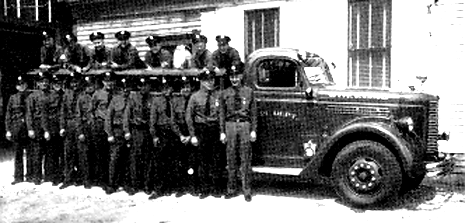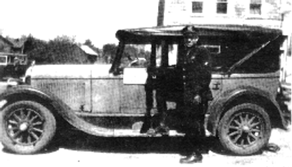History of the Village:
Wheeling Through The Years
The soft cover book Wheeling Through the Years
an oral history of Wheeling, an Illinois village contains
over 250 8x11 pages, and is available for purchase through the
Historical Society for $25.00 directly, or by mail with a $5.00
shipping and handling charge.
This book contains chapters on growing up in Old
Wheeling, school days, girl scouts, homesteading, Yankee farmers,
German farmers, Wheeling Train Station, Crane farms, Denoyer farm,
Milwaukee Avenue, Early planes and airports, prohibition, World War
II, Hispanics, organizations, churches, and much more. Illustrated
with photographs from the 1700's through the 1980's. Some
samples are included below.
If you are at all interested in Wheeling's past, we would like very much for you to join us in the preservation of our history and artifacts. If you would like to become an active member of the Wheeling Historical Society, please fill out the online application and mail it to us. and mail it to us.
| WHEELING VOLUNTEER FIRE DEPARTMENT members of 1938 line up with their tanker truck. In the foreground is the department's original hand-pulled and hand-operated pumper, replaced in 1925 and now in the Wheeling Historical Museum. |
 |
 |
MORS TAVERN and livery stable was on the east side of Milwaukee Avenue south of Dundee, about where the Forke house is. |
| WHITE HEARSE with a team of white horses was driven by Frank Forke, Wheeling's early funeral director. He also had a black rig with horses to match, so you could take your pick. |
 |
 |
ROBERT PEROILAT HOUSE had a hedge of arbor vitae along the walk in front of it. Mourners going to a burial would pick a sprig to drop into the grave as a symbol of eternal life. |
BOTTLING WORKS of Martin Kuffer (at right with dog) was the local distribution place for Birk Brothers' Supreme Beer, made in Chicago. At left is Kuffer's neighbor, August Pieper, with his daughter Elsie and son Teddie.
|
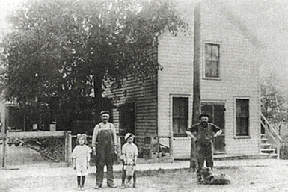 |
 |
JENSEN'S ICE CREAM PARLOR on Milwaukee Avenue was built by the Utpadels, using cement blocks for which they were famous. |
| THE SWITCHBOARD had posts for two operators, who provided phone service in Wheeling during the day. Ruth Rockenbach Dipple (left) and Eleanor Bugner Ekuelja were on duty when this picture was taken. |
 |
 |
ON ARMISTICE DAY, 1918, the whole village of Wheeling turned out for a spontaneous parade. Mrs. Edward J. Welflin helped deck out the Welflin general store's truck for the occasion.
|
| THE WELFLIN HOUSE, built just east of the river, was inherited by the Ballings. When the Forest Preserve District took over the land, the house was moved across the river. |
 |
| OLD VILLAGE HALL stood in the shadow of the water tower at 84 S. Milwaukee Avenue. It was built in 1897 and served until 1955, later becoming the Museum of the Wheeling Historical Society and was moved to Chamber Park. |
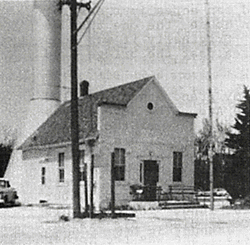 |
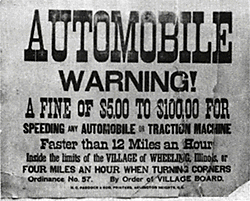 |
ORDINANCE NO. 57 of the Wheeling Village Board set a speed limit of 12 miles per hour when going straight and 4 miles per hour when turning corners. It was passed September 20, 1904.
|
| GAME WAS PLENTIFUL in the early days of Wheeling, and you could count on hunting to provide a share of the family's meat. In this picture the game was a fox, shot more to protect the barnyard geese and chickens. |
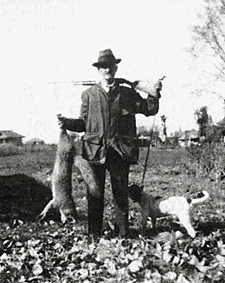 |
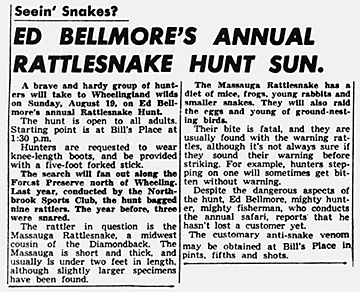 |
RATTLESNAKE HUNT was announced in the Wheeling Independent of Wednesday, August 15, 1956. Longest snake caught was bottled in formaldehyde, and is among artifacts of the Wheeling Historical Society. |
WHEELING'S BASEBALL HEROES of 1914 (from left) were Jack Mayer, Charles Utpadel, Arthur M. Miller, Arthur Meyer, Oscar Benz, Otto Utpadel, Carl Miller, Joe Radtke, Joe Kroll, Albert Utpadel and Dr. E. E. Gieseke. Seated is Pat Radtke. The team played against many villages of the northwest area.
|
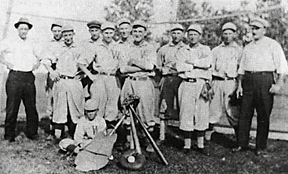 |
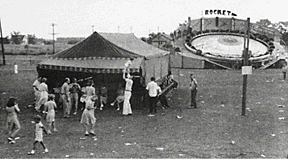 |
|
| WHEELING DAYS was an annual celebration sponsored by the Chamber of Commerce and the Volunteer Fire Department. Proceeds went for local charity and civic improvements. Because of the nature of the event, some laws were not thought to apply -- which was understood by local law officers, but not always by broader jurisdictions. |
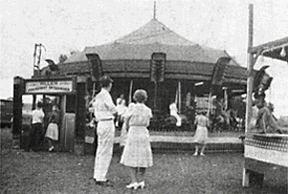 |
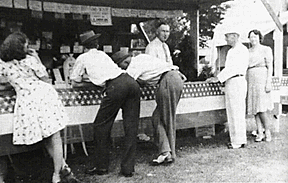 |
|
|
WHEELING DAYS weren't always peaceful, as demonstrated in this report from the Wheeling Independent on a raid conducted by the County Sheriff's police. It met with considerable reaction by the townspeople.
( Click to enlarge ) |
 |
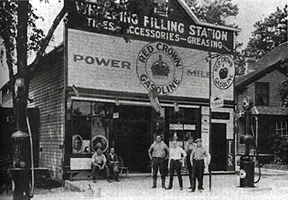 |
MAYER'S FILLING STATION was in what was Stryker's meat market. That was in the days when regular gas was about 20 cents a gallon and Ethyl, the premium gasoline, was near 25. |
CHIEF MARVIN O. HORCHER, known more familiarly as "Syke," appears in this 1962 picture with Dick Wasson of radio station WEAW. That was the year Wheeling won its fourth Safety Award in a row for reducing the number of traffic accidents.
|
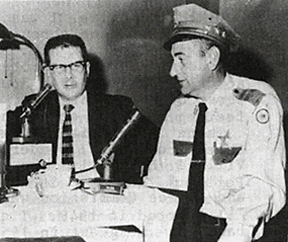 |
 |
AMATEUR THEATRICALS provided entertainment in the years before radio and television. The old church, and later the school, was a center of community activities. |
|

